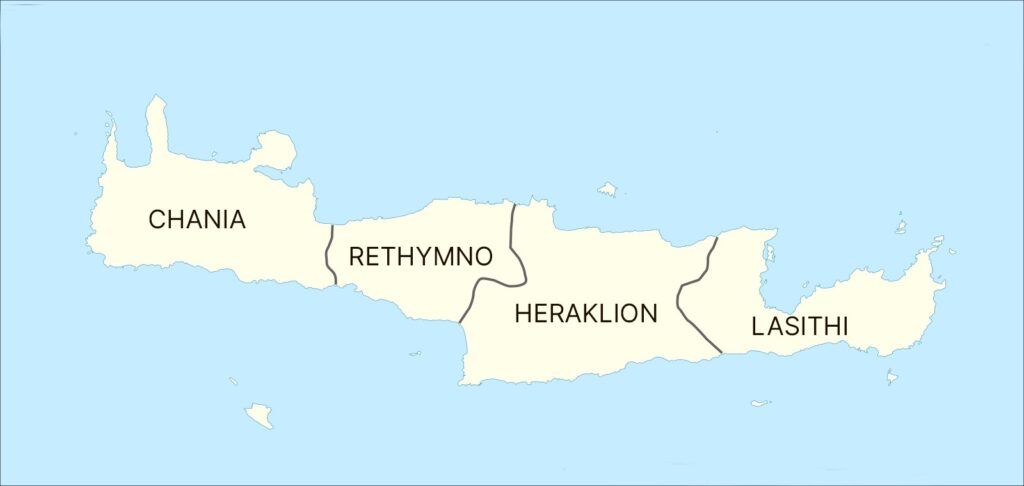The region of Lasithi, located at the eastern edge of Crete, is renowned for its beauty and contrasts, featuring both well-developed tourist spots and untouched areas. The capital, Agios Nikolaos, is famous for its picturesque lake and coastal road.

Lassithi in Crete is a captivating blend of natural beauty, historical significance, and rich cultural traditions. The Lassithi Plateau, nestled beside Mount Dikti, stands out with its stone-built windmills and charming landscapes. Lassithi is renowned for its stunning beaches, many of which have earned “blue flag” status, along with its 300 km of pristine coastline. The region enjoys a sunny climate, boasting nearly 3,000 hours of sunshine annually, and is home to exceptional biodiversity, including Natura 2000 sites that protect rare species of flora and fauna.
The area is rich in archaeological treasures from the Minoan and post-Minoan periods, with notable sites such as Zakros, Lato, and Ierapitna. Its dramatic natural features, including the Ha, Lapathos, and Sarakina gorges, provide unique opportunities for exploration and hiking. The caves in the region, such as Dikteion, Peristeri, and Milatos, are steeped in history and mythology, while the Venetian fortresses and mansions, including Spinalonga and Kazarma, are equally impressive.
Lassithi’s abundant religious heritage features significant monasteries like Toplou and Kapsa alongside numerous Byzantine churches. The region also offers vibrant towns like Agios Nikolaos, Ierapetra, and Sitia, each with a distinct charm to cater to diverse preferences. Elounda, nearby, is known for the islet of Spinalonga, a former Venetian and Ottoman fortress and leper colony, now a popular tourist destination. Ierapetra, the southernmost town, boasts charming alleys and the historic Kales Fortress. In the north, Sitia features an amphitheatrical layout, Kazarma Fortress, and is part of the UNESCO-designated Sitia Geopark. At the island’s easternmost point, the Vai palm forest is a major attraction with its unique palm trees.
Gastronomy
In the easternmost part of Crete, the inhabitants of Lassithi consume the island’s most significant quantity of wild greens and mushrooms due to the area’s untrodden regions. Lassithi’s cuisine is characterized by its home-grown vegetables, with notable regional differences. The plateau and mountainous areas stay cool in summer and provide fresh produce like broad beans and tomatoes. In contrast, the coastal areas from Agios Nikolaos to Sitia offer a variety of seafood.
Key dishes include the vegetarian ‘sofegada’, a summer vegetable and herb dish, and roast pork with local potatoes. Festive meals often feature soup with wild rooster or chicken. Sitia’s locals excel in fishing, creating dishes like ‘kakavia’ and scorpion fish soup. Sitia is also renowned for its pastries and desserts.
Lassithi produces exceptional agricultural products, including award-winning olive oils, a variety of fruits and vegetables, quality dairy products like Xigalo Sitias PDO cheese, and unique legumes from the Lassithi Plateau. Its vineyards produce notable P.D.O wines, particularly from the Liatiko grape. Sitia also boasts delicious traditional sweets and excellent honey.




